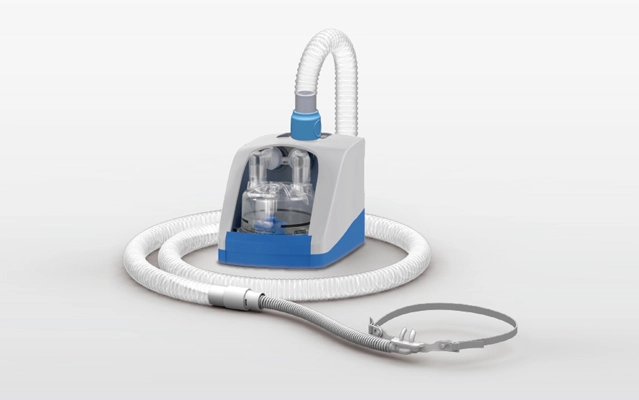In the Intensive Care Unit (ICU), patients often experience extremely unstable health conditions, requiring close monitoring of various physiological parameters. Among these, end-tidal carbon dioxide (EtCO2), as a crucial indicator reflecting a patient's respiratory and metabolic status, holds significant importance in assessing patient conditions, guiding treatment, and predicting prognosis. In recent years, with the continuous development of portable end-tidal CO2 monitoring technology, its application in prognosis management for ICU patients has become increasingly widespread. This article explores the impact of portable end-tidal CO2 monitoring on the prognosis of ICU patients from various perspectives.
Real-time Monitoring and Timely Intervention
Portable end-tidal CO2 monitoring devices can provide real-time, continuous monitoring of a patient's end-tidal CO2 concentration, offering immediate information on the patient's respiratory and metabolic status to healthcare providers. In the ICU, patients often experience severe impairment of respiratory function, leading to life-threatening conditions such as respiratory failure and hypoxemia. Through portable end-tidal CO2 monitoring devices, healthcare providers can promptly identify abnormal changes in a patient's respiratory function, enabling swift intervention measures such as adjusting ventilator parameters and administering medication to maintain stable breathing and prevent further deterioration.
Assessment of Condition and Treatment Guidance
End-tidal CO2 concentration is closely related to a patient's respiratory function, circulatory status, and metabolic level. Portable end-tidal CO2 monitoring allows healthcare providers to accurately assess the severity of a patient's condition, providing a basis for developing personalized treatment plans. For example, for patients with respiratory failure, adjustments to ventilator modes and parameters can be made based on changes in end-tidal CO2 concentration to achieve optimal ventilation. Changes in end-tidal CO2 concentration for patients with circulatory failure can reflect the patient's circulatory status, assisting healthcare providers in determining whether vascular-active drugs or other supportive treatments are needed.
Prognostic Prediction and Optimized Management
Changes in end-tidal CO2 concentration not only reflect a patient's current condition but also predict their prognosis. Studies have shown that a sustained decrease in end-tidal CO2 concentration often indicates worsening patient conditions and an unfavorable prognosis. Through portable end-tidal CO2 monitoring, healthcare providers can detect this trend promptly, allowing for early intervention to prevent further deterioration of the patient's condition. In addition, end-tidal CO2 monitoring helps healthcare providers evaluate treatment outcomes, make timely adjustments to treatment plans, improve treatment efficacy, and further optimize prognosis management for patients.
Enhanced Nursing Efficiency and Reduced Healthcare Personnel Burden
Traditional portable end-tidal CO2 monitoring devices are often bulky and operationally complex, making widespread use challenging in the ICU. Portable end-tidal CO2 monitoring devices, with their compact size, user-friendly operation, and portability, facilitate convenient patient monitoring for healthcare personnel. This not only improves nursing efficiency but also alleviates the burden on healthcare personnel, allowing them to focus more on patient care and treatment.
In summary, portable end-tidal CO2 monitoring devices significantly influences the prognosis of ICU patients. Through applications such as real-time monitoring, condition assessment, prognostic prediction, and enhanced nursing efficiency, portable end-tidal CO2 monitoring provides robust support for the treatment and prognosis management of ICU patients. In the future, as technology continues to advance and application becomes more widespread, portable end-tidal CO2 monitoring will play an increasingly vital role in prognosis management for ICU patients.
 English
English










